Intro
Contents
The sound quality of your Spotify streams and digital music depends on more than just your headphones or speakers. Your digital cables (USB, Ethernet, coaxial, optical), modem and router, the hard drive on your computer, and even the type of Internet Service Provider (ISP) you have (coax vs fiber) – all contribute heavily to what you hear.
Anyone who tells you digital devices and cables can’t make a difference – is bullshitting you. They either haven’t heard it for themselves or choose to be ignorant. Assuming healthy ears, those are the only two possibilities.
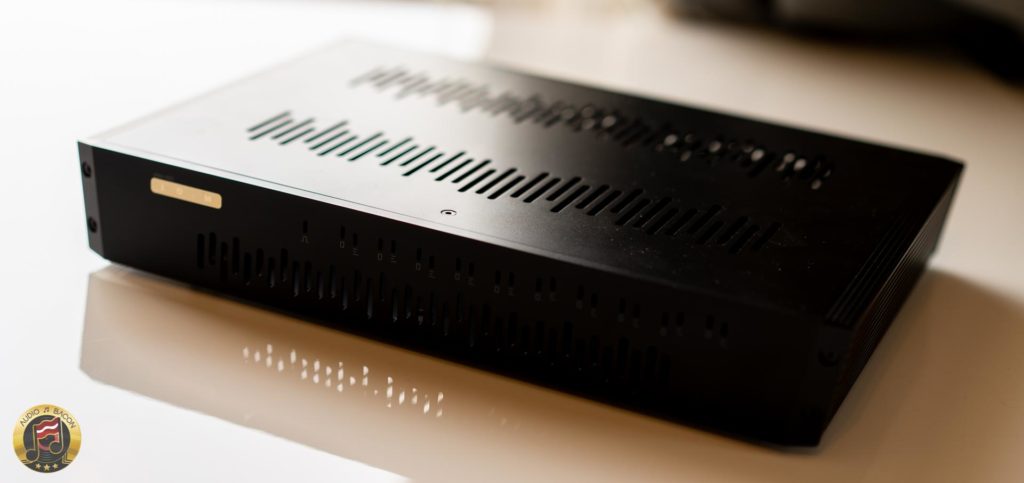
Aren’t they just zeros and ones?
I’m probably one of the very few audiophile reviewers who have a Bachelor’s in Electrical Engineering and a Masters in Computer Science. As far as tech is concerned – you name it, and I’ve probably done it. From writing audio/video codecs and programming microcontrollers – to
This domain requires many configurations to be absolute – and measurable. I prefer numbers and I’ve cultivated quite a binary mindset. I’m all about log files, charts, and graphs.
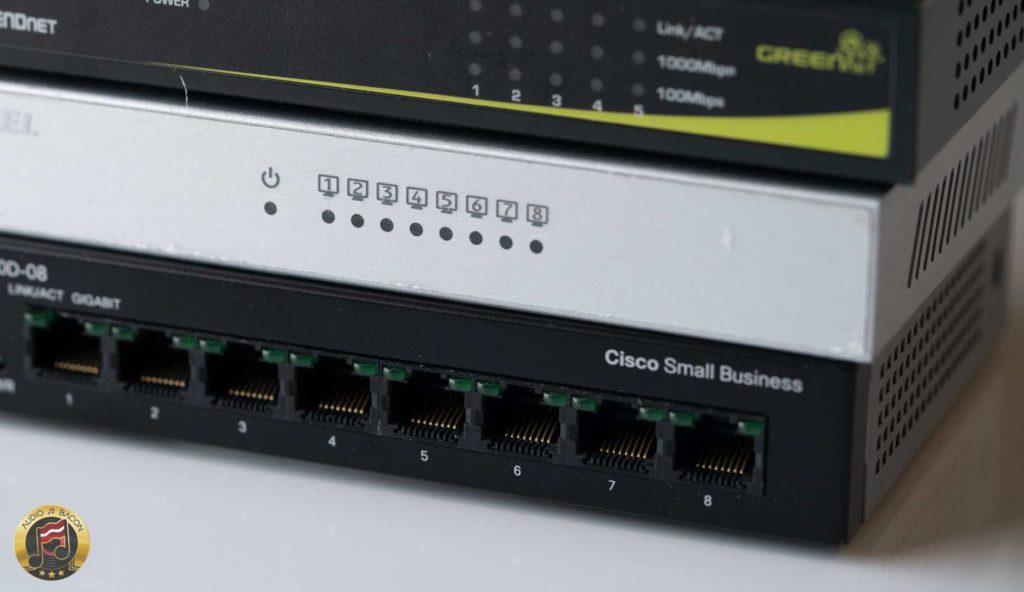
In such a technical environment, the only thing that kept me sane – was listening to music. When I started my audiophile journey, it was easy to accept the possibility that headphones and analog cables could sound different. But when I first heard about “audiophile” USB cables and routers – my “snake oil” senses went off. My engineering mind shouted, “It’s just 0’s and 1’s fools!”
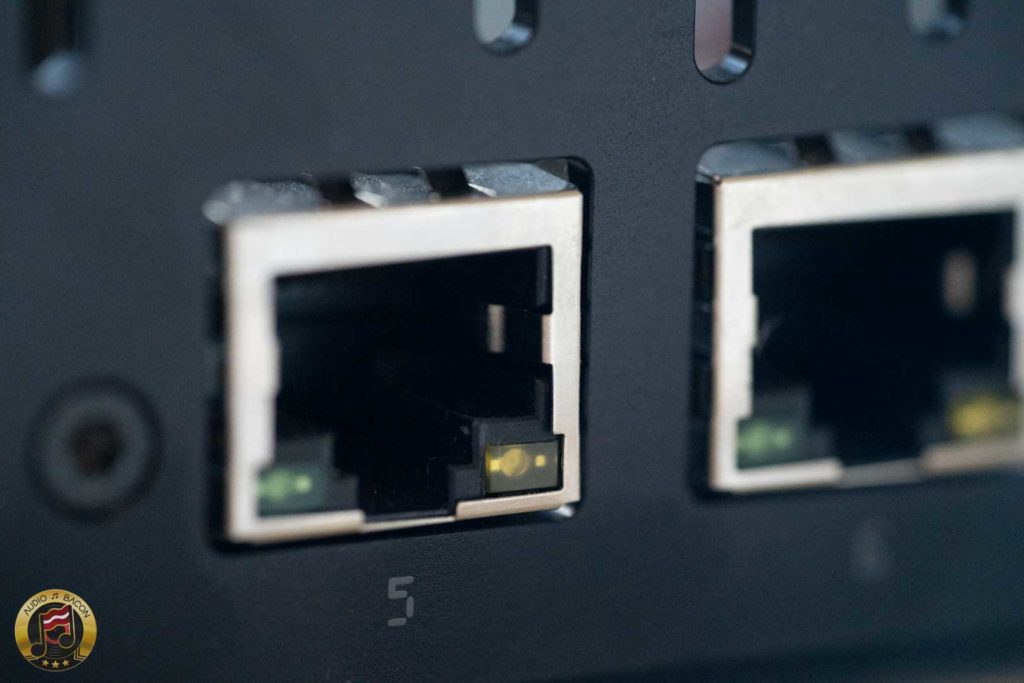
Regardless, an astute engineer (and human being) always
At this point, I could do one of two things: Be egotistic and demand proof – or just hear it for myself. Which path one takes largely depends on personality. Although it was easier to dismiss these notions, I decided to just hear it for myself. I’ve now been listening to audio gear full-time for about 5 years now.

The Audiophile Mindset
I’ll be reviewing SOtM’s new “audiophile-grade” Ethernet switch. The “job” here is to figure out whether this audiophile product makes an audible difference. And more importantly, whether this difference enhances one’s personal enjoyment of music. This means that the problem is inherently subjective – objectivity has very little relevance.
We could all agree, if a product sounds good to us, it doesn’t matter how a piece of equipment measures. In fact, some of my favorite headphones measure very poorly. I’m good with that. And that’s enough reason for me to ignore measurements completely.
Aside from finding problem areas and repeatability purposes, there’s little gain from looking at measurements. Especially for making purchasing decisions. Besides, it’s a fact that even if a cable were to measure the same, it doesn’t necessarily mean it will sound the same.
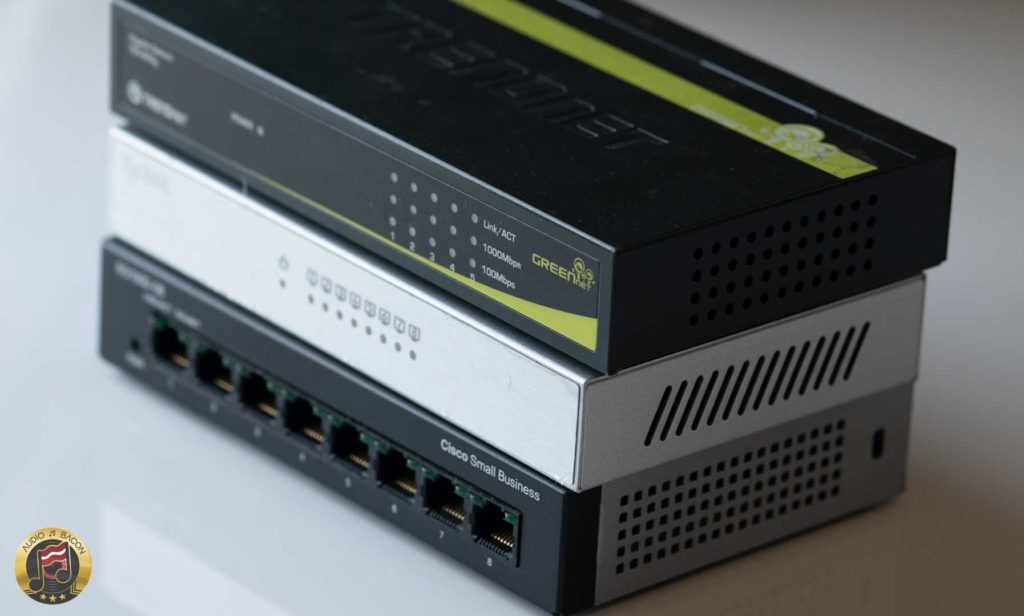
The right tools for the right job…
Consequently, the best tools are your own ears and an open mind – not an oscilloscope or LCR meter. My suggestion would be to listen to as many designs as possible and figure out what you gravitate towards. Also, realize that your tastes may change over time.
Once you’ve done that, you could figure out if there are any correlations between what you like – and what is measurable. However, I’m not sure how fruitful that would be.
Your listening experiences and preferences are the only things that matter in this hobby.
Measurement Morons
I believe our preconceptions can be (and should be) challenged. It’s what breeds progression and makes us human. We’re not omniscient and there’s still a lot to learn. Digital audio has gone a long, long way just in the past decade.
There’s a difference between someone who says “I don’t hear a difference. Thus it makes no difference.” and “There can’t be a difference (gives a scientific reason). Either your mind is playing tricks on you or there’s something wrong with your system.” Be wary about those who say the latter. They’re usually #measurement_morons.
It’s interesting how some of these other engineers (and their minions) denounce what audiophiles are hearing as placebo and hallucinations. They also demand double-blind and null tests for everything. Do they really think intelligent people who are able to afford this gear – would drop lots of cash for something they don’t really hear? Time to get off that high horse, homie.
100% of these Measurement Morons aren’t even real audiophiles. Yeah, I said it. If you were an experienced audiophile, you would already know that higher quality digital cables could help improve the sound of a system.
As discussed, they just have a different personality. They’re usually (not always) the close-minded, introverted, dismissive, cynical types, who treat their textbooks as gospel. Ironically, they want to spread “the truth” but are actually misleading the masses. I have no clue what their purpose is in this space – but I’m positive they have too much time on their hands.

The Sound of Networking Gear
Take two different Ethernet switches you have at home and try to stream Tidal, Qobuz, or Spotify through it. They’ll sound different. I guarantee it.
In fact, I recently switched from cable (coax) to fiber for my Internet Service Provider (ISP) – and immediately noticed the differences in how my music streams sounded – even on a Google Home. I had both connected so I was able to A/B very easily. For what it’s worth, the fiber sounded quieter, quicker, and more transparent at the expense of warmth and body.
I’ve written quite a bit about why it isn’t just 0’s and 1’s here, here, and here. It boils down to noise (RFI/EMI) modulating how the DAC interpolates the bits – and how it affects the analog output section.
Many don’t realize that a digital signal is still an analog signal – and it’s not perfect. Better clocks and isolation equates to lower phase noise and jitter. The human ear is discerning enough to hear these minute mistimings in music – especially in the form of transients. If you want to nerd out on the technicals, feel free to read this white paper.

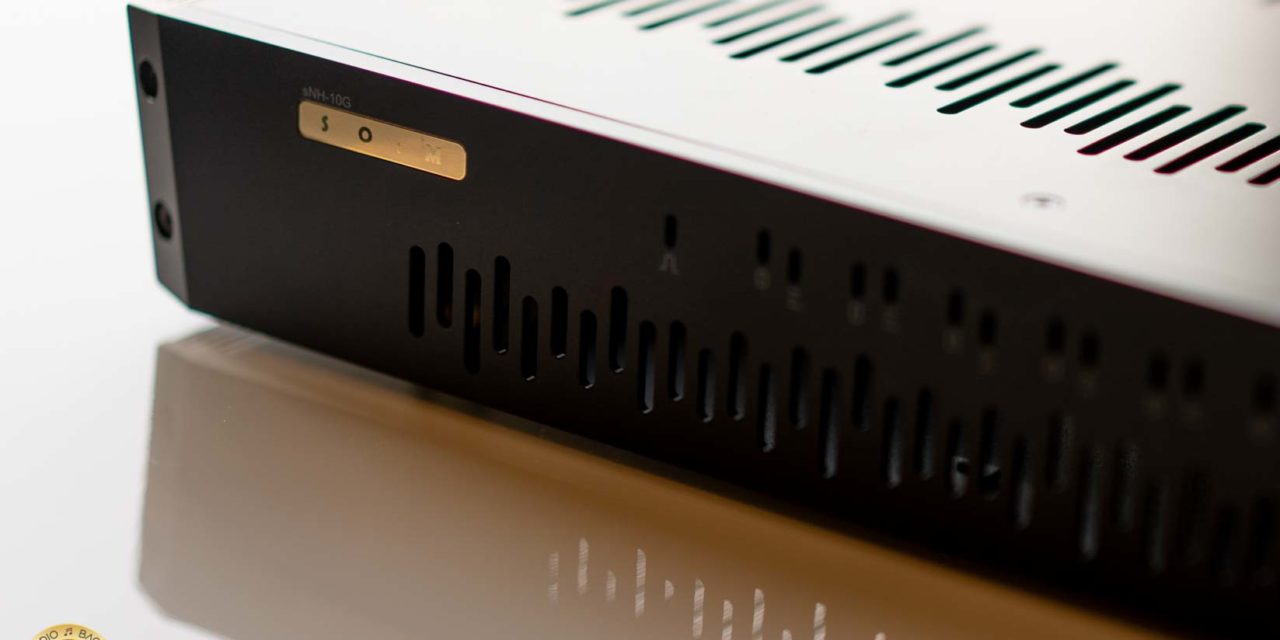



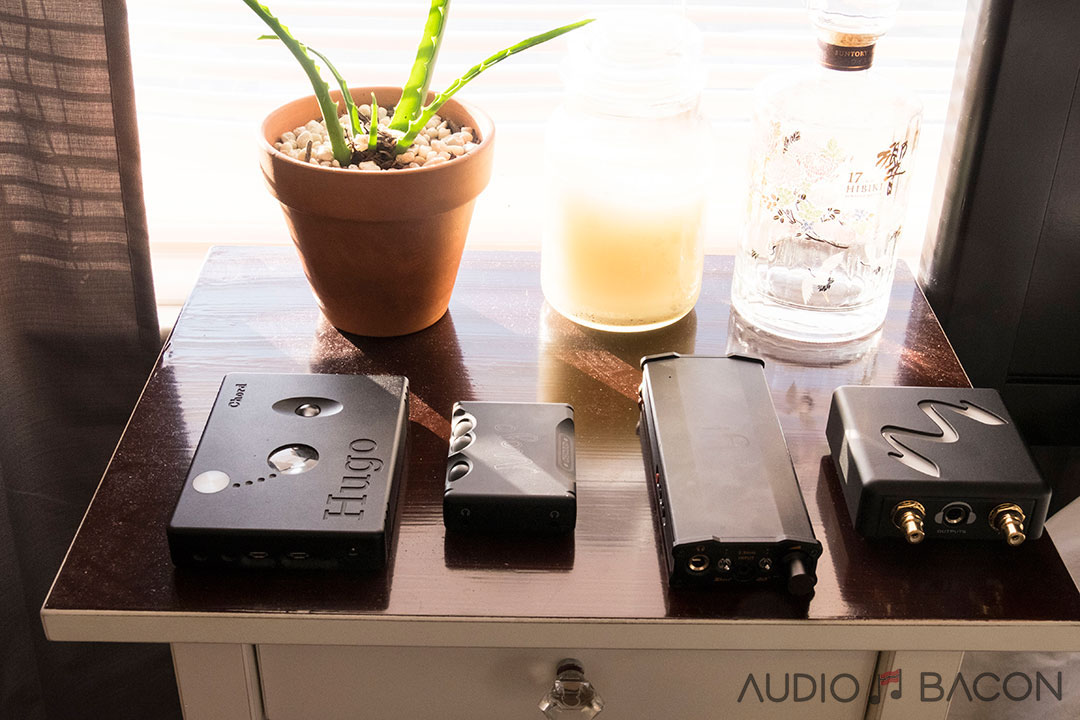

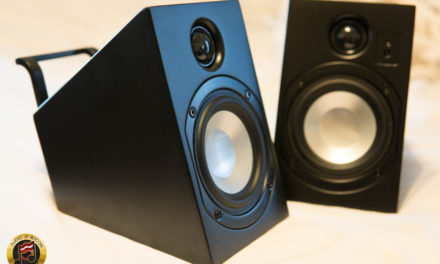

Chris Conneker of Computer Audiophile concurs with your POV, as do many others.
There is an alternative to the wildly expensive SOtM switch.
Paul Pang offers two Audio Grade Switches. One @ $219.00 and the other at $1190.00
https://ppaproduct.blogspot.com/2015/07/audio-grade-switcher.html?m=1
Pang suggests that two of the $1190.00 switches takes fidelity to an even higher level.
A follow up review comparing the Pang modded switches to the SOtM and Cisco switches would be most welcome.
“MEASUREMENT MORONS”
Thank you!!!
You stated my my view to the letter, with 1 exception. I call them :”Flat Landers” rather than Measurement Morons.
As we know “Flat Landers” KNEW that the world was flat, in much the same way that audio naysayers KNOW that the things that they either can’t afford or don’t want to pay for cannot possibly change the sound.
We as humans are still the equivalent to infants in our knowledge.
Just because WE DON’T YET KNOW how to perform the appropriate measurements to satisfy the Measurement Morons, does not mean changes do not exist.
But here’s what I do know any piece of equipment that doesn’t have a signal to noise ratio of CD quality or better is a no go for me. Then start listening with Pet Sounds. More likely than not I’m done, the piece of equipment can’t do it. By the time I get to my reference banjo and harmonica recordings I have eliminated nine out ten pieces of equipment.
And I can safely say a lot is known about what measurements are important.
A continuity tester is all I use for audio cables. The rest is in the listening.
I was wondering can this switch be deployed as a noise filter? due to circumstances I have to use a wireless bride to connect to my innuos so if I add the SOTM switch between my wireless bridge and the innuos, will it improve the sound quality?
Most definitely. I’m only saying that because I’ve tried using an ASUS bridge directly before. Sounds better with the SOtM.
What about going direct from router to Streamer/DAC without a switch?
You don’t buy such a switch because you need more ports, you do it because of its re-clocking and lower noise capacitors etc. Is it worth the price tag? -> you have to decide for yourself.
You, silly, silly human being. Thanks for the laughs!
Agreed. I have been in professional audio for 40 years, and this is easily the silliest article I’ve ever made the mistake of reading.
How can this be a audio switch, it doesn’t even support IEEE802.1BA standard. Go lookup a Catalyst 9200, 3850, 9300 and get a real switch instead.
A rebranded cheap switch and call it audiophile doesn’t make the product better, even if it costs 10 times more than normal.
Sorry, I really don’t believe this review. And the speakers in the test are more like midrange too.
OK, you’re probably a bachelor in engineering, but not in networks. 🙂
You obviously have a faulty music player. The fact that plugging a cable in can alter the sound of the player means that the players designers did a bad job of designing the EMI / RFI suppression system in the music player.
There is so much buffering going on in file playback that in a well designed system, only two factors are relevant, file integrity and sample clock performance. In a badly designed system, where shielding and interference suppression were disregarded, all sorts of things start to mess with the system.
My question is why you are barking up the wrong tree and kludging a “fix” that means paying snake-oil money to address a problem that should not exist in a well designed system.
You said it better than I could have, a well designed DAC should be immune to what is plugged into it. I suspect a lot of audiophile digital gear is indeed poorly engineered.
You guys obviously aren’t audiophiles. Tell me…which DAC or music server/player is completely immune to noise? You wouldn’t be able to point out a single damn product – because it doesn’t exist. Even “well-designed” gear is susceptible. Also, the level of suppression matters and could adjust how one enjoys the sound. Which goes back to “If it measures well, it doesn’t mean it’ll sound good to everyone.”
They all are susceptible, to a varying degree. Agreed. But the thing that matters is whether they will degrade their output as a result of it. “Audiophile” gear has a long history of not being designed to be robust and tolerant, interface-wise, probably because there are observable problems with constraining bandwidth in the analog domain. But this is digital data. If the bits that come in are identical to what is being sent from disk (and the CRC32 on the Ethernet frames pretty much guarantees that, together with the TCP checksumming and retransmission going on, for which we have buffering), the resulting waveform will not deviate as a function of the transfer.
In my experience, as a broadcast network engineer doing several orders of magnitude more complicated things than essentially copying a file over a short cable, (like transfering 100+ channels of real-time live sound 600km over dedicated networks and playing some of them back in surround, which of course requires path delay alignment in the microseconds range to be believable) the cable and the switch are negligable. As long as they perform to standard and lose no bits, and the switch supports the timing protocols. (This is of no concern to your test case, because you can buffer and will use your local sample clock oscillator steered to the values derived from metadata in the file. I am listening to my GPS-controlled OXCO putting IEEE1588-2008 packets on the wire, and using that as sample clock steering. Much harder. And measurable.)
Why am I going on about this? Because _everything_ is done to a budget. It simply does not make sense to start wandering off in these directions before the problems with the DAC are solved. Because, I’m 100% certain that that is where you’ll find the root cause.
Paying large amounts of money for Ethernet gear simply does not make sense from a systems engineering point of view, not here, where no optics are involved, no distances are critical, and no bandwidths are even remotely constrained.
I’d start with getting a good oscillator for the DAC, one that is stable and has negligable jitter. Probably means that it needs to be an OXCO, i.e ovenized and separate. Or rubidium, steered by GPS, if you want long-term stability.
Oh, and don’t forget, make sure you do not have ground loops running in the Ethernet cable screen. Potential equalization with short and low-impedance cables is very important; as is insensitivity to Pin 1 problems (Muncy, JAES, 1994).
This is /engineering/ — it is not voodoo. It is treated as voodoo by people who earn large amounts of money from people who want to believe in it. But in the end, there are simple reasons why things work and not, especially so in digital transmission.
Put your money in record players and loudspeakers instead. That is where money makes a direct difference. The rest is simple. At least in comparison.
And compare double-blind. We have 100+ years of solid psychology research pointing to it being completely necessary to get anything remotely repeatably true out of subjective evaluation.
Thanks.
fantastic reply, Måns !!
Jay’s response of “You guys obviously aren’t audiophiles.” is the perfect red-flag for cult’ish, mob thinking over a quest for objective truth. In a time where lots of anti-science rhetoric is flying about, that and other monikers like “measurement morons” cast the audiophile community as a sort of voodoo religion.
For years, I’ve called myself an audiophile… I love music & I simply strive to re-create it to the best of my ability. That ability is a combination of budget, understanding & limits of my own perception. First, we need to acknowledge that this industry is FULL of snake-oil. Some is malicious, some is not… but where there’s a buck to be made, you can guarantee somebody will be there waiting for a sucker. Nobody wants to be that sucker and most would never want to admit to it either.
Anyway, in the realm of analog hi-fi, I think there’s still plenty of wiggle-room for some crazy-complex electrical interactions masquerading as some kind of witchcraft. From the DAC-forward, there’s a complex system where each component up to & including the electromagnetic thing moving the air has it’s own butterfly-effect on the net result.
I see lots of folks applying that same type of thinking to the even MORE complex digital system on the other side of the DAC… so many that really want to believe that the same principals apply to the packets, frames & serial-streams of binary data. And while it is a modulated signal that can have errors, those have been mitigated by the checksums, error-correcting protocols & buffers. Yes, if you’re streaming audio via. UDP, it can contain glitches… but that’s not how most of this media is streamed…. it’s treated like files over a application-level protocol. Think about it… if you send a file from one computer to another over ethernet and it gets corrupted… something is very very wrong!!
Audiophile switches… *SMH* it’s like somebody found a band of zealots out in the desert, desperately looking for a new god…
TCP checksumming? Make your homework!
Music- and Videostreaming does not use TCP/IP but UDP/IP and Google has even an own Protocol -> less overhead, but no checksumming or resending of lost packets. Therefore quality of components and cables matter even more or error correction has to fill the gaps, which will be audible when reaching a certain threshold. Digital is not fool proof, it can go wrong as well.
You are 100 % certain that his DAC is “bad”. Have you measured his DAC or the same model ? Have you checked the manufacturer’s website for specs ?
Maybe you should offer to replace the clock for him with a money back guarantee?
Otherwise why should he follow your guesses at his expense ?
I’ve worked in networking for 20 years, TCP-IP is a lossless protocol, if a packet gets corrupted, then it’s re-sent… What switch you use has zero impact on the quality of your sound.
Following your theory,all content on the internet would suffer degradation every time is duplicated, and 90% of it would be corrupt – as as a “software developer” you should know that is crap, every file has a checksum, any corruption would be detected.
I’m not saying the packets have errors – they don’t. Otherwise, it would be clearly audible. I’m saying the cable itself indeed changes the sound at the output due to how it modulates noise and interacts with the connected components.
That DAC does not exist.
Seth, You suspect without scientific proof ? WTH ?
Have to agree with you here. Although, with a tiny budget like his it is probable he might get bad results even if there were a decent component here and there in the signal chain. In my humble opinion, no point reviewing a switch before the rest is in order.
Do you have scientific proof that Mr. Bacon’s music player is incorrectly designed ?
Thanks for the laughs! I applaud your ability to write absolute utter nonsense for 5 pages straight and still making it sound like an article.
Oh boy…. wait until someone flags the Master on this review — the one and only Dr. Ethan Winer! Then the hell will break lose.
How does this compare to the TLS you reviewed in Sept 18?
This article is about as ignorant as it gets for audiophile writers. If this guy has a degree in engineering, then I’m the queen of England. Either that or he graduated last in his class. What he misses (among many things) is that hearing perception is fragile and varying. He also misses that moving your head even an inch or two makes a real difference in the response reaching your ears. So yeah, the sound changed, but not because the wires pass audio differently. All of this stuff is so well known, it’s disappointing to see such outright bullshit repeated. People reading this article might be fooled into thinking this guy knows what he’s talking about, when in reality he’s what he himself calls a moron. Though in Jay’s case he’s an “anti-measurement” moron.
You are certainly a drama queen! Last in my class? LOL. I don’t think Bill Gates would’ve paid for my undergraduate and graduate degree if that were the case. 🙂 Before you discredit someone’s hard-earned degree – make sure you have one.
Hm, this is all common knowledge. We all know hearing perception is sensitive and moving even a few millimeters (especially in near-field) will change the sound. That’s why it’s so critical to properly set up speakers in a room. It’s just physics – easy stuff. This is where measurements would be helpful to find any problem areas and tweak things.
Regarding cables, if you’re saying they can’t change the sound of a system – you’re wrong. It’s well known that even if a cable measures the same, they could still sound different. Galen Gareis of Iconoclast has over 35 years in cable design experience and has the world’s best measurement devices at his disposal. He doesn’t “voice” his cables and designs them strictly on measurements. He himself says he hears non-subtle differences depending on the type of copper used – even though the cables had exactly the same LCR measurements. https://audiobacon.net/2019/02/25/iconoclast-interconnects-and-speaker-cables-review-the-real-deal/
Now if that doesn’t convince you, nothing will. Enjoy being the Queen of Measurement Morons.
You nailed it! Mr. Whiner is indeed the Queen of the #measurement_morons!
As a network admin with 20 years in the field, a recording musician I can whole heartedly say your ju ju and snake oil is utter toss. Not sure who pays for your ridiculous articles but you are a fraud.
This tired old argument brought out like a flabby tart to see if a blind man will bite? Really now. The sugar and salt levels in my bloodstream have an effect on my audio perception, as do fatigue, stress, mental distraction, the sound of construction next door – yes, all this is true. Along with minute changes in the angle of my head in relation to my speakers, the placement of my headphones on my head, etc. So you are essentially arguing that EVERYTHING affects perception. Just not cables or components. Somehow the very material through which the signal travels has no effect on that signal? Do you even know how a digital signal travels through a cable or switch? And god forbid I ask the real question – have you heard the component in question? No? Okay then shut it…
That’s a poor guess Ethan.
Way to stand up to these idiots, Jay. It’s amazing how many losers like Ethan know how a record sounds even before the needle hits the groove. Why even listen to music when looking at measurements all day long would suffice for dweebs like this. Drama queen, indeed!
I bet you are a Flat Earther
Biggest shit I have just read about audiophile equipament!
It’s interesting how some of these other engineers (and their minions) denounce what audiophiles are hearing as placebo and hallucinations. They also demand double-blind and null tests for everything. Do they really think intelligent people who are able to afford this gear – would drop lots of cash for something they don’t really hear?
The simple answer to this question is: yes.
People like to believe in their own truth. Good luck with yours 🙂
Thanks for the great article, Jay. The sonic differences between cables aren’t subtle. I hate that’s it true, because it’s expensive, but it is.
Regarding the folks who measure first and listen second, a measurement is an attempt to represent reality, it isn’t reality. It’s a shadow. Like Platos’s cave, one sitting in the cave wouldn’t know the outside world is three dimensional and in color. Their view of the world helps indicate rain but not the color of the sky. We only measure what we know and are capable of. If cables sound different to the vast majority of people (whether or not they want to spend money on that difference) the simpler explanation is that we’re not measuring comprehensively, rather than all the people are wrong.
Before IC’s, tube and discrete circuit amps were uniformly measured and evaluated by wattage and THD. It was a good, albeit directional, indicator of sound quality. In the 70’s, IC amps hit the market offering high power, minuscule THD, at a much cheaper price. However audiophiles said they didn’t sound as good.
At first, people said audiophiles were simply justifying their expensive equipment. After some research, it was learned that the IC’s introduced a new distortion, intermodulation distortion (IMD), that affected the sound and now needed to be measured too.
Hi Jay,
I am running a wifi mesh. So the modem and router are in the room adjoining the music room. In the music room I have an Orbi Satellite.
I have tried running a SoTM CAT 7 cable directly from the Orbi Satellite to the Direcstream DAC’s BridgeII and also tried running it via the SoTM switch.
I find the SoTM switch gives the music more weight, but also makes it sound too ‘exciting’. The sound going directly from the satellite to the DAC has better blacks and more laid back.
Admittedly this switch did not have the SoTM EVOX conductors. Would love to know your thoughts about a wifi mesh set up with vs without a bridge.
Regards.
Hi Jay, and thanks for another great review. I’ve enjoyed your site for a couple of years now. Would you be able to compare this switch to THE truly outrageously expensive switch – the most expensive one I’ve ever heard of: the Telegärtner M12 Switch Gold?
I’m an audio engineer and you are an absolute bullshitter! The only degree you have is a degree in absolute bullshit! I’ve never read such nonsense in my entire life!
lol (pats you on your back). Calm down. This is not a place for close-minded audio engineers.
Hello, can you make the test with a real Switch like HPe vs Cisco , please ?
I dare you to post your uni degrees with your name on it unredacted here. And if you do, I will write to your unis asking them to revoke your degrees for the bullshit you write here, which stinks enough to cross continents.
-Joseph Yeung
Technical advisor at Hiby Music http://www.hiby.com
LOL. I mean, if I only had a cognitive science degree, I would be jealous too. (pats you on your back)
A cognitive science degree would be exactly what you need to know why your ears are bullshitting you. But what are you talking about. I studied music production and did my graduate thesis on AI audio analysis, and have an MSc where I spent major credits on acoustics as well. What did YOU learn in school about audio? Going even by your stated degrees… not a thing!
If you learned your audio you would know how much jitter affects the hearing outcome (hint: not at all given the levels we’re talking about in modern audio equipment). If you knew your networking you’d know that if your network switch’s “analog” signals were indeed compromised in their characteristics, they won’t be able to be decoded at all and you’d be hearing no music rather than worse music from online. If you knew your COGNITIVE SCIENCE, you’d know why sighted listening tests about anything not scientifically proven to be of audible difference is a waste of everybody’s time.
And yet, where is your proof of whatever stupid degree you even supposedly have?
LOL, geez, don’t get your panties in a bunch, Joseph!
Even generic Ethernet switches sound different. The day you stop being a robot and hear the difference with your own human ears – I will forgive you for your ignorance. Please stop misinforming people about something you have no experience with.
The day you stop believing that your senses are infallible and take a proper blinded listening test of your precious ethernet switches conducted by a qualified third party, and predictably hear nothing of what you claimed here, I will forgive you of your grevious assaults on true audiophilia. Please stop misinforming people about something you have no KNOWLEDGE of. If we went about trusting our eyes and ears about everything as you do about audio, we would literally still be cave men believing the earth is flat.
And I pity you for the obvious fact that you have so little way of actually tweaking audio to your liking that you worship ethernet switches and USB cables. Go tweak a parametric equalizer for a day and try coming back on your soapbox to wax poetic about the tonal qualities of your stupid switch again, I double-dog-dare you.
(steps on soapbox) Joseph, it’s not your fault you were born with poor ears. It’s understandable that you have to rely on measurement devices. BUT that’s OK! You could hear vicariously through us!
You’re the one with ears poor enough to be ridden with auditory hallucinations. It’s okay, you don’t have to go see a shrink for it, lots of people are ridden with the condition and there’s apparently no cure for it 🤣 Well, other than that eye opener called double blind testing. Or enough knowledge to know for certain when your ears are simply fooling you. Or enough sound design knowledge to tweak your system to sound truly great with any music so you don’t go seek out placebo cures for your audio ills like a terminal cancer patient going for homeopathy. I have all three plus work at an actual audio company to boot, you have none. What a pitiful “audiophile” you are.
haha. Joseph, you really need to take a chill pill. You’re probably the most emotional troll I’ve ever seen! Please get help and find a way to control it.
Anyway, I’m done playing with my food. Good luck with your audio company! You’ll need it.
I see you were idle enough to reply to me in the middle of Boxing Day of all days too*… what a poor lonely man you must be.
*at about the same time as that Fabian guy, funnily enough 🤔
Hi Joseph. I agreed with you. As a network engineer, all of this SCREAMS bullshit to me as well.
As reluctant as I was…..I tried streaming music from Pandora (I am too cheap for Spotify) with a few business class Cisco switches. I also include some D Link and Netgear consumer switches into the mix. I have NO IDEA why BUT I heard some large differences between the switches. Before you say it! I am absolutely sure my brain is not playing games with me. Music was played without pause and some switches sounded more detailed or smoother (ex. less sharp) than the others. It was not better or worse but absolutely obvious. While logging packets I did not see any problems with these switches. So there is something else that is affecting the end sound. Maybe you could figure out why for all of us?
and…..Jay, please accept my most sincere apologies for that nasty email I sent you. I have misspoke and I am sorry.
*- Fabian -*
No worries Fabian, I’m used to it 🙂
Your post, if you’re for real, proves nothing but the fact that you greatly underestimate what it takes to prove to people that the logically impossible is true, via listening tests. “Before you say it!”? I do absolute say it. Nothing about your methodology is any more rigorous than the regular run o’ the mill sighted “comparisons”. You demean yourself needlessly to this charlatan, all because your brain is playing its usual tricks on you. Of course, there’s also a great possibility that you’re a sock puppet of Jay, created to fawn upon himself. :rolleyes:
This must be performance art. It is absolutely incredible to me that so many stupid, mis-informed people could all congregate in a single corner of the internet. I went into the wrong line of work with software engineering. I should have been slamming $14 worth of OTS hardware into sleek “audiophile” chassis for all you chumps instead.
Welcome to the world of digital, where we don’t have ‘attenuation’ and ‘noise’ and ‘loss’, we have ‘bit loss’ and ‘file corruption’ In either of these cases, the audio or video does not get corrupted or ‘sound different’ It just doesn’t play. The chances of this on your home network are so low they are considered non-existent (except by the peddlars of ‘special audiophile equipment)
Let me try to explain it for those new to digital audio
The Ethernet cables (and switches) are transporting millions and millions of data bits (one/zero – on/off – high/low, terminology does not matter) from point A to point B , (you may have heard of IP addresses)
The Ethernet cable is totally dumb and does not know at any point if the next bit is audio, video, Youtube, WhatsApp or from a printed page. The bit error rate of a digital network is approaching zero
Hifi needs a connection maximum of around 5 Mbps to stream.
My Ethernet network is 1,000 Mbps (around 200 concurrent HiFi audio streams)
My wireless 802.11ac wireless network has a theoretical 1,300 Mbps, probably actual of around 400 Mbps (around 80 concurrent HiFi audio streams)
If I can stream dozens of Ultra HD (4K) 25 Mbps video streams concurrently, why would I need special ‘Audiophile :~) hardware’ for a single FLAC file which needs around 3 Mbps?
Don’t fall for this nonsense
There is no such thing as an audiophile switch. There only thing that can be done is to prioritize the most important traffic, so it is not to be queued. Streaming audio is encoded and buffered, which makes insusceptible to latency. It is decoded and clocked properly on the receiving side. The only audio aware switches are for time critical data such as real time audio. This is AES67, QLAN, Dante, etc. I can tell anyone dont waste your money on this switch and buy a switch that is PTP aware if you play real time low latency audio. Otherwise buy a normal switch, because likely you are not a network professional and don’t know what you are doing anyways.
The real problem with articles like these are they become a real bore. Could be summed up “I like brand x and it doesn’t sound like brand y.”
There is a whole discussion on this ethernet switch stuff and diyaudio.com.
I remember at RMAF around 2012 Parts Express had a ABX comparison of a Lm3886 chip amp vs a Jadis tube amp on 4 various sets speakers. The chip amp was around $200 the Jadis around$10,000. The interesting thing was the test was not to see which one “sounded” better, they asked people to identify which one was the tube amp. I saw the test results posted on the wall after the show and 74% of people chose the chip amp as the tube amp. I consider myself fairly open to various opinions, but I’m very skeptical now. Audiophiles have become completely delusional. How am I to trust that many people who cant tell a IC chip from a kt88 amp!
I’ve taken measurements of some very expensive Litz interconnects that have exhibited very high non-linearities. But I’m supposed to believe the marketing hyperbole of how life changing it is. Yawn…
Sometimes there are differences but not with every piece and very rarely on power cords, your article on that was 10 min of my life I’ll never get back.
The best thing to address the issue of many disagreeing with this article is to listen (not measure) for themselves. If you can – get yourself a low cost good quality Cisco 2960 switch – if you are open (NOT closed) minded and don’t hear a difference by putting a Cisco Switch in your ‘streaming’ Hi-Fi chain then that answers your question.
You could of course have a mediocre Hi-Fi system with cloth ears be closed-minded and stubborn – in which case you won’t hear any difference. If you are in this category – just go buy a good flat screen TV and start a new hobby instead 🙂
What a load of BS. If a switch is faulty or the network is faulty, there will be audio drop-outs. The author of this crap claims certain qualifications, but then demonstrates a complete lack of knowledge of network protocol. There is no such thing as an “audiophile switch”. Damn fools everywhere. Run Wireshark to see that lost packets are replaced and that the data received is always the data sent in non-faulty Ethernet.
Jay I am intrigued you have an Innuos server but have not tried their own switch, the Phoenix ? How come? On the Innuos owners fb group it gets rave reviews
Review unit is pending.
Have you tried the Silent Switch OCXO by Ediscreation of Hong Kong? I am looking for a review of this switch.